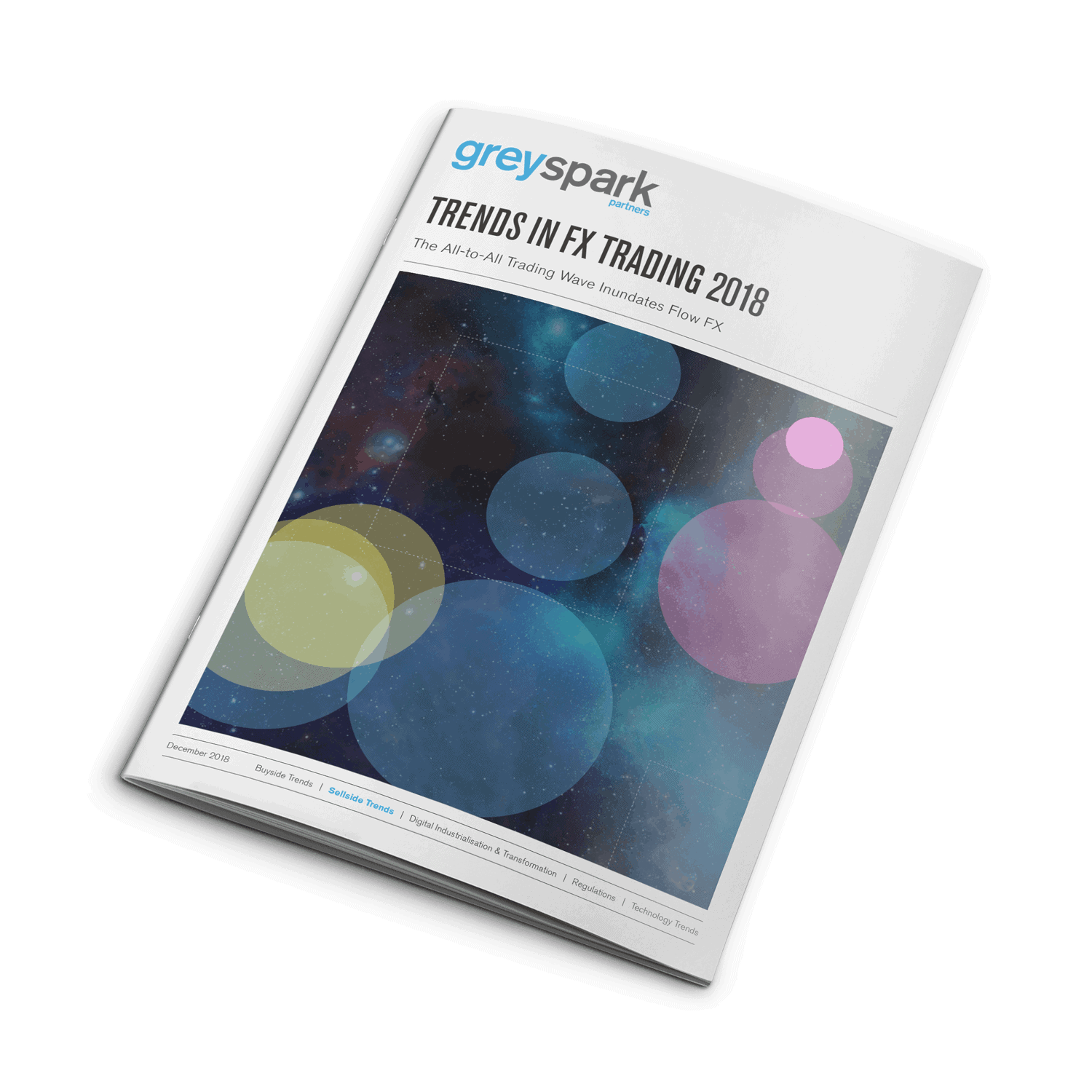Quod Financial was described in the “Trends in FX Trading 2018” report by Greyspark Partners as the leading “Serious Challenger” in the newly emerging Buy-AND-Build space.
Today’s Technology Enigma
– BUY and you are immediately limited, do you still have an edge? Will the technology juggernauts value an off-the-shelf client?
Why does Buy-AND-Build exist?
A lack of diversity in the vendor space has made it increasingly difficult to differentiate yourself from your competitors. The limited in-house budgets are focused on areas of differentiation, previously it was the whole technology stack but are now much more niche. The total number of vendors throughout 2018 has continued to consolidate through acquisitions so an outright technology purchase often leads to duplicating a competitor rather than creating a differentiated offering.
Complexity of e-trading:
In 2018 the e-trading workflow has become increasingly complex. As Tier-2 and Tier-3 participants seek to differentiate themselves in the market their focus has turned to unique products. These products and markets are serviced by a diversity of technology but the end clients are increasingly demanding simplified access channels. This puts an increasing technology onus on the sell-side to invest heavily in unifying their client experience moving budgets away from core trading technology.
Vendors drive for profitability:
The logic of simplification and productisation has been well established for vendors and 3rd party technology. Firstly the feature land-grab while in the growth phase of the business to acquire clients, customised functionality is on a first-come-first-served basis until the product reaches maturity. Once significant market share has been established the goal is then to standardise the client deployments to minimise support and maximise revenues. The leading platforms with largest market share such as Bloomberg have successfully pioneered the one-size-fits-all model and in turn much of the market in FX and Equities is captured by similarly successful participants like FXall, FXConnect, Fidessa, SmartTrade, Broadway etc. Given the spiralling costs of in-house solutions the deployment of a comprehensive, trading + e-distribution solution from a single vendor has had high appeal.
Development Frameworks and CEP providers:
For some capable in-house teams they turned towards development frameworks or complex event processing systems. The goal being to build a fully customised in-house system without having to reinvent all the low level tools for trading and execution. However, the challenge in capital markets quickly become that generic tools were often not specific enough to the needs of financial technology to compete effectively with the fully in-house solutions or vendor products. Often even the framework components were being re-written to support the necessary latencies and specialities of the industry.
The Buy-AND-Build revolution:
This vendor segment has tried to balance the strengths and weaknesses of a choice between purchasing a fully off the shelf solution and a complete in-house build. Quod Financial has for many years serviced this segment which provides highly focused technology but in a completely open architecture to allow progressive integration and customisation. The Buy-AND-Build market presents clients with a fully off-the-shelf product that is both modular and flexible to the in-house enhancements and developments of the customer.
Quod Flexible Middleware Solution:
At Quod Financial our Multi asset E/OMS, SOR, ALGO and MM solution for Sell-Side and Buy-Side is designed from scratch to strike the balance between immediately deployable and completely customisable. Using a modular design of high-performance C++ components linked together by an open flexible multicast middleware solution, we give our clients the ability to quickly deploy new enhancements while creating their own customisations without any limitation. This presents a high degree of flexibility to focus on multiple revenue generating initiatives without over-committing on internal development.
Trends in FX Trading by Greyspark Partners
The All-to-All Trading Wave Inundates Flow FX
This report evaluates the shifting market structure in the currencies market, with particular focus on the spot FX market. By evaluating 14 leading spot FX brokerage venues in 2016 and 2018, the analysis traces the increasing incorporation of non-traditional liquidity providers and broadening liquidity pool offerings of the evaluated multi-dealer platforms. These changes are contextualised as both drivers and results of changing FX trading business models among both buyside and sellside market participants, as well as the evolving FX e-trading technology landscape.
Trends in FX Trading 2018 – Table of Contents
- 1.0 Flow FX Market Structure
- 1.1 Spot FX Liquidity Fragmentation & Aggregation Within Venues
- 1.2 The Evolution of Spot FX Liquidity Pool Functionality
- 1.3 A Shift, Not an Extinction
- 1.4 A2A Functionality & Acknowledgement Approach Alignment
- 2.0 Shifting Flow FX Market Participant Business Models
- 2.1 The Buyside
- 2.2 The Sellside
- 2.3 Conduct Imbalance & Transaction Cost Analysis
- 3.0 The FX Trading Technology Landscape
- 3.1 FX E-trading Workflows
- 3.2 Purchasing Behaviour
- 4.0 Appendices
- 4.1 Glossary of Terms
- 4.2 Table of Figures



